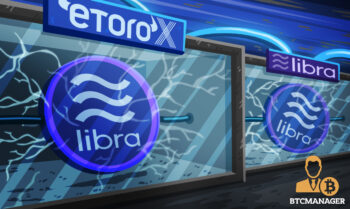
2020-7-15 15:19 |
Since blockchain and cryptocurrency became more mainstream, many businesses recognized its potential for increased security. Today, IT organizations in every industry have begun exploring how blockchain can have a positive impact on their infrastructure.
Blockchain in real estate helps eliminate many intermediaries that result in higher fees and transaction times; in finance, blockchain reduces operational costs and offers a higher level of privacy and protection; and in eCommerce, blockchain allows deeper insight into supply chain movement.
We spoke with the intranet software company, Simplrr, about the importance of interoperability, the proliferation of blockchain, and how both impact internal operations. The Simplrr intranet is designed as a seamless internal workplace hub that allows employees to communicate, collaborate, and comply. According to the company, how an organization operates internally can make all the difference to the bottom line and overarching success. Here’s what you need to know:
Understanding InteroperabilityFirst, it helps to understand what interoperability is and what it means for business. Interoperability is the ability of systems within an organization to work together and share information with one another.
Communication across technology should be seamless—even when systems exist independently from one another and are developed by different companies. One way businesses allow this cross-level communication is through the use of integrations, which makes interoperability a step further. Traditionally, the issue with bridging the gap between a platform like Simplrr and a platform like Salesforce is protecting the exchange of information between those tools. Today, advanced data sharing permissions make third-party integrations possible.
COVID-19 & the Rise of Remote WorkSince COVID-19 called for quarantines for state lockdowns, there’s been a significant rise in remote work. Businesses that didn’t already have strong internal processes in place have struggled to maintain the organization as they pivot to a work from home policy. Now more than ever, the emphasis is on cloud-based project management and data storage solutions. Employees need to be able to manage workflows in real-time in any location.
In today’s evolving workplace ecosystem, a digital hub is necessary for companies to remain on track as they transition into new ways of working. The primary goal of any internal system like an intranet or management portal is to increase internal productivity, but the increase in flexibility doesn’t come without its risks.
For example, businesses are naturally more vulnerable to security breaches outside of the workplace. Whether they’re connecting to a public internet at a local coffee shop or forgetting sensitive paperwork at a co-working office, human error is unavoidable. A secure intranet and blockchain minimizes those risks and reinforces compliance across the entire organization.
Block & Intranet: How Do They Relate?A popular analogy states that a private blockchain is like the intranet while a public blockchain is like the internet. A private blockchain is centralized and controlled by the company that operates it—much like the Facebook coin or the JP Morgan crypto coin. Compare this to a decentralized public blockchain, which is managed by peers. These private blockchains have much more privacy than public blockchains.
Although blockchain is inherently public and intranets are essentially internal-facing, there are ways the two can work together. One method is by encrypting content before it’s put on the blockchain, and the other method involves building a relationship between your data and the blockchain by using hash keys and editing permissions to control which nodes connect to the chain. From here, you can limit access to that chain’s port to hosts within your network.
Moving Forward: Addressing the Blockchain Interoperability GapIn order for blockchain to see mass adoption, the interoperability gap needs to be addressed. All businesses have some level of interoperability already occurring. Sending an email to assign a task is one example of interoperability. However, in the future, it’s important that interoperability efforts are moved to an even higher level that ensures increased efficiency and quality of care.
Blockchain interoperability is necessary for the industry to mature and evolve. Now more than ever, it’s important for organizations to invest in systems that offer 360-degree data exchange around the world. Universal accessibility is necessary for widespread blockchain usage.
The healthcare industry is one of the strongest examples of antiquated systems and the interoperability gap. This makes it difficult for healthcare systems to use healthcare apps that make data sharing easier and allow organizations to scale faster. If healthcare organizations adopted blockchain on a universal scale, they would be less likely to run into barriers that prevent them from treating patients quicker and getting paid quicker.
Several projects are already underway to address the interoperability challenges among blockchain. For example, Polka Dot is a cross-chain technology that allows different blockchains to plug into a larger, standardized ecosystem, while Cosmos utilizes an inter-blockchain communication (IBC) protocol to help establish interoperability on the blockchain.
origin »High Performance Blockchain (HPB) на Currencies.ru
|
|




















